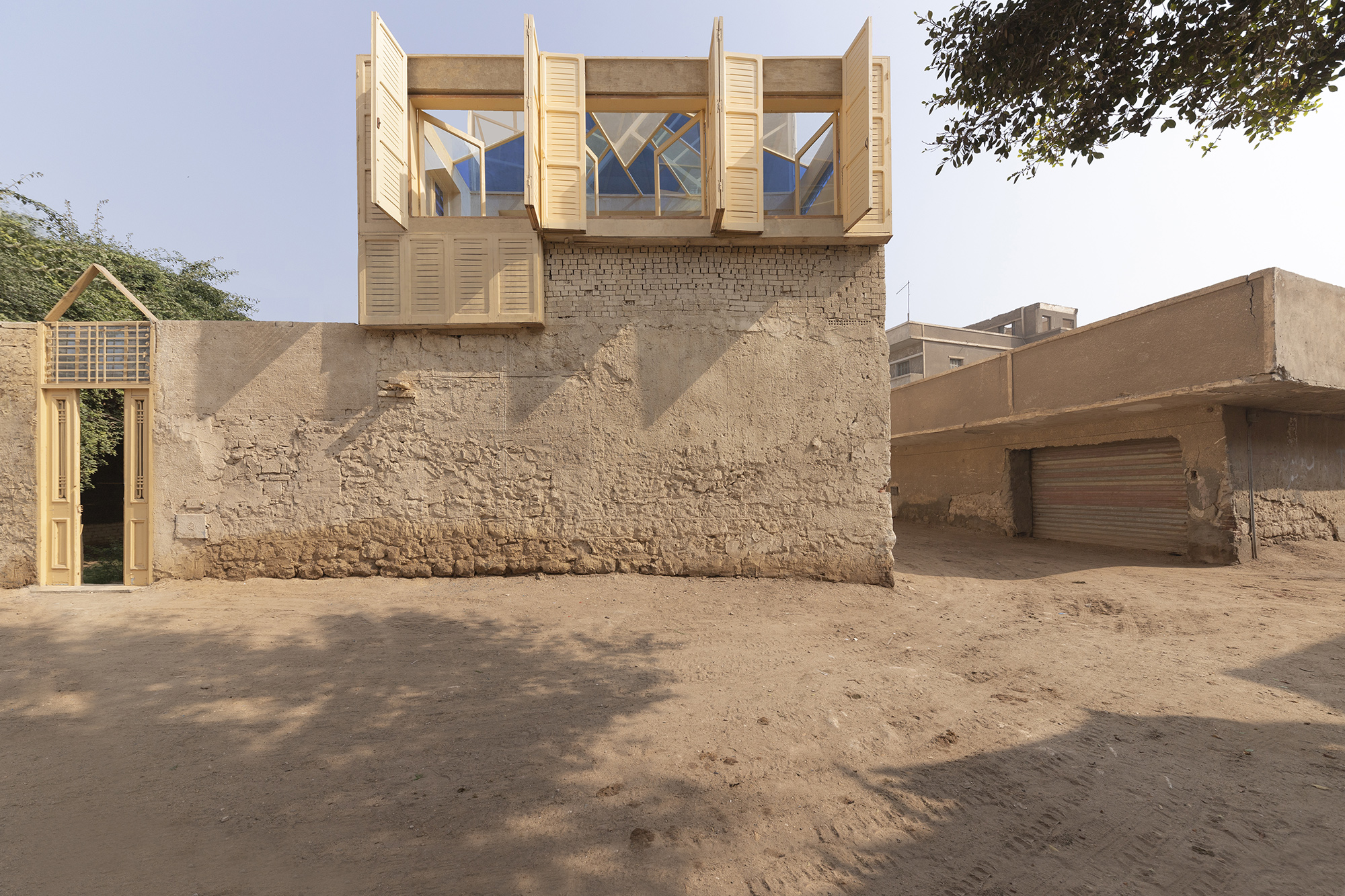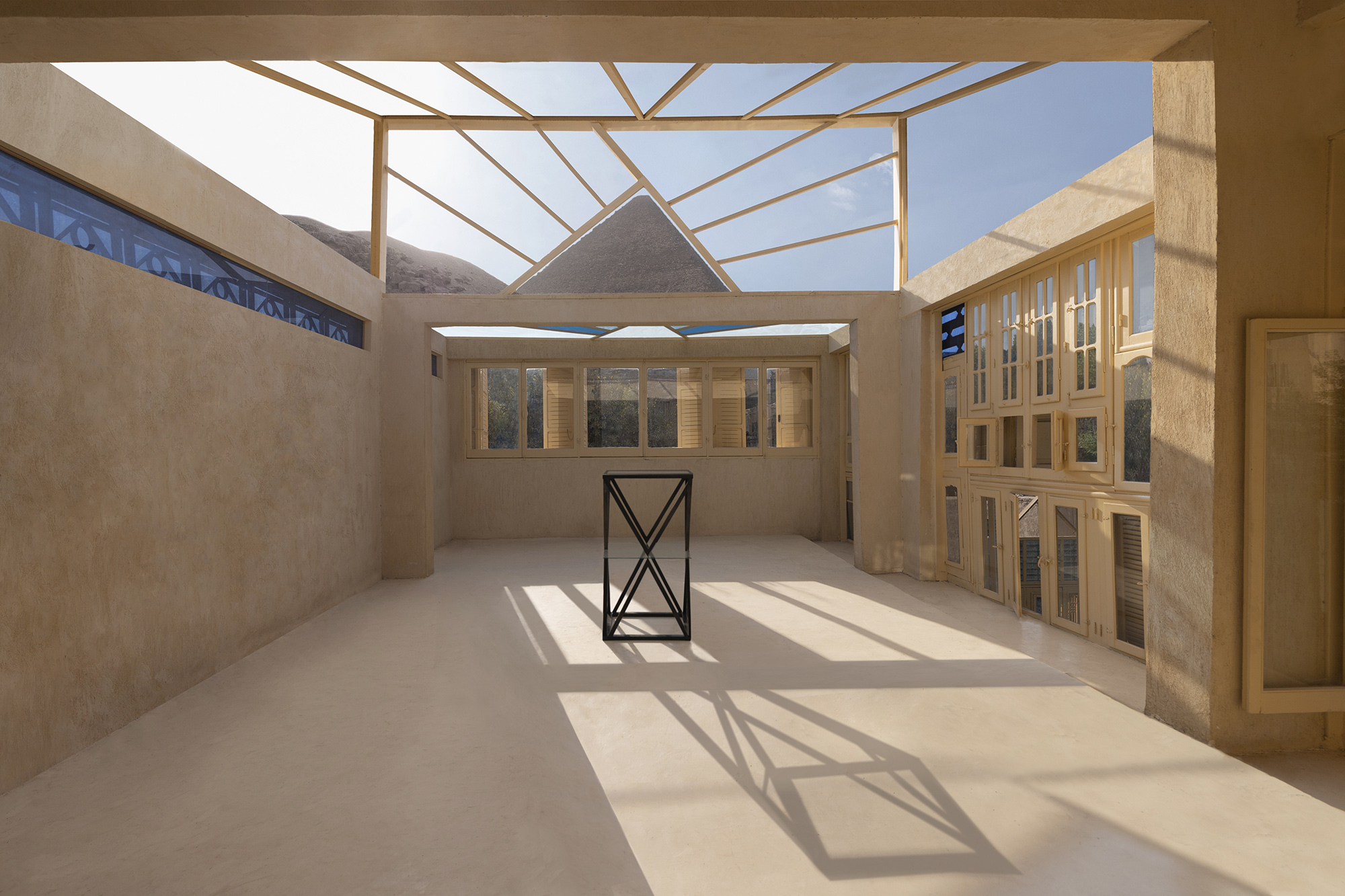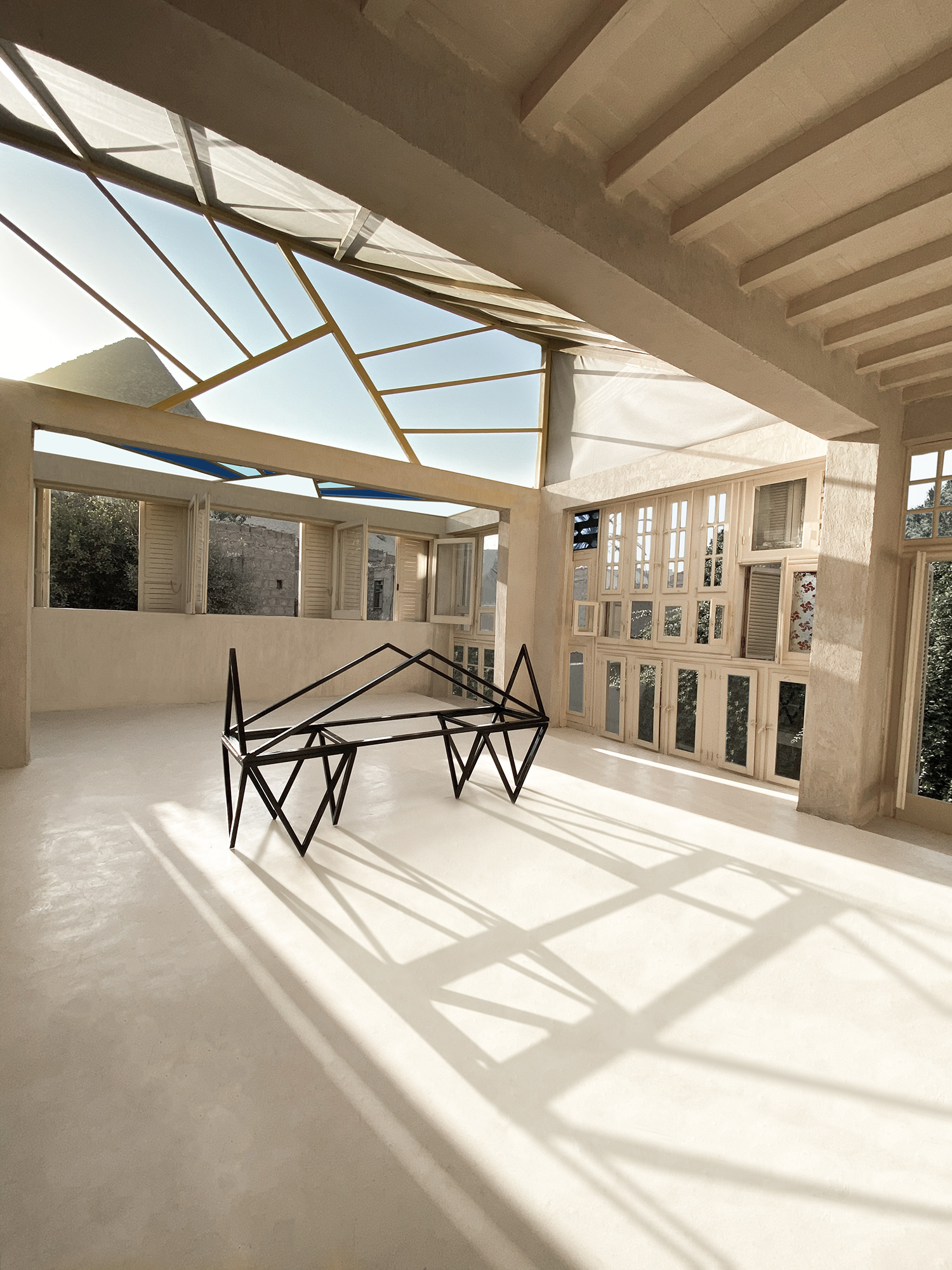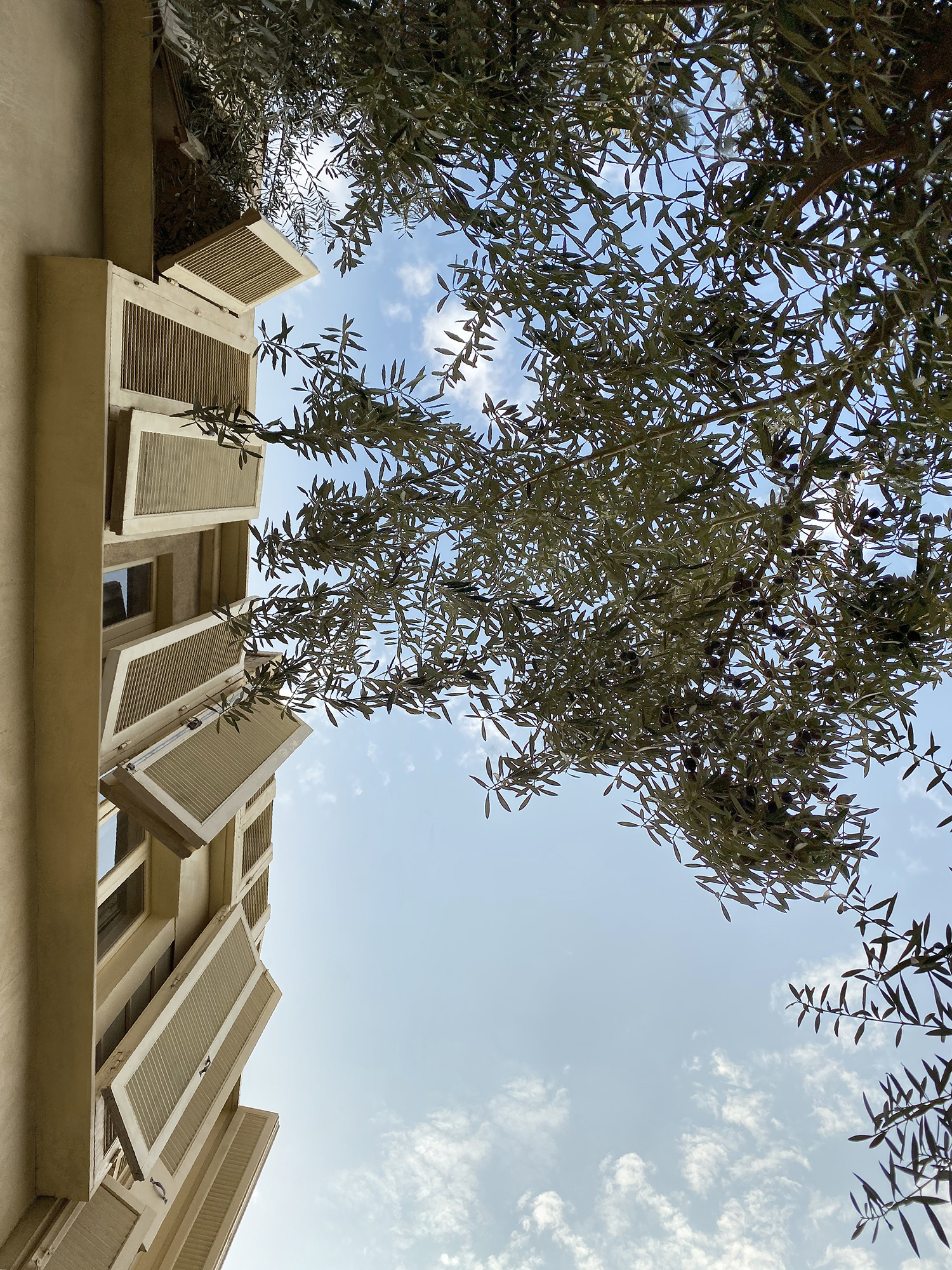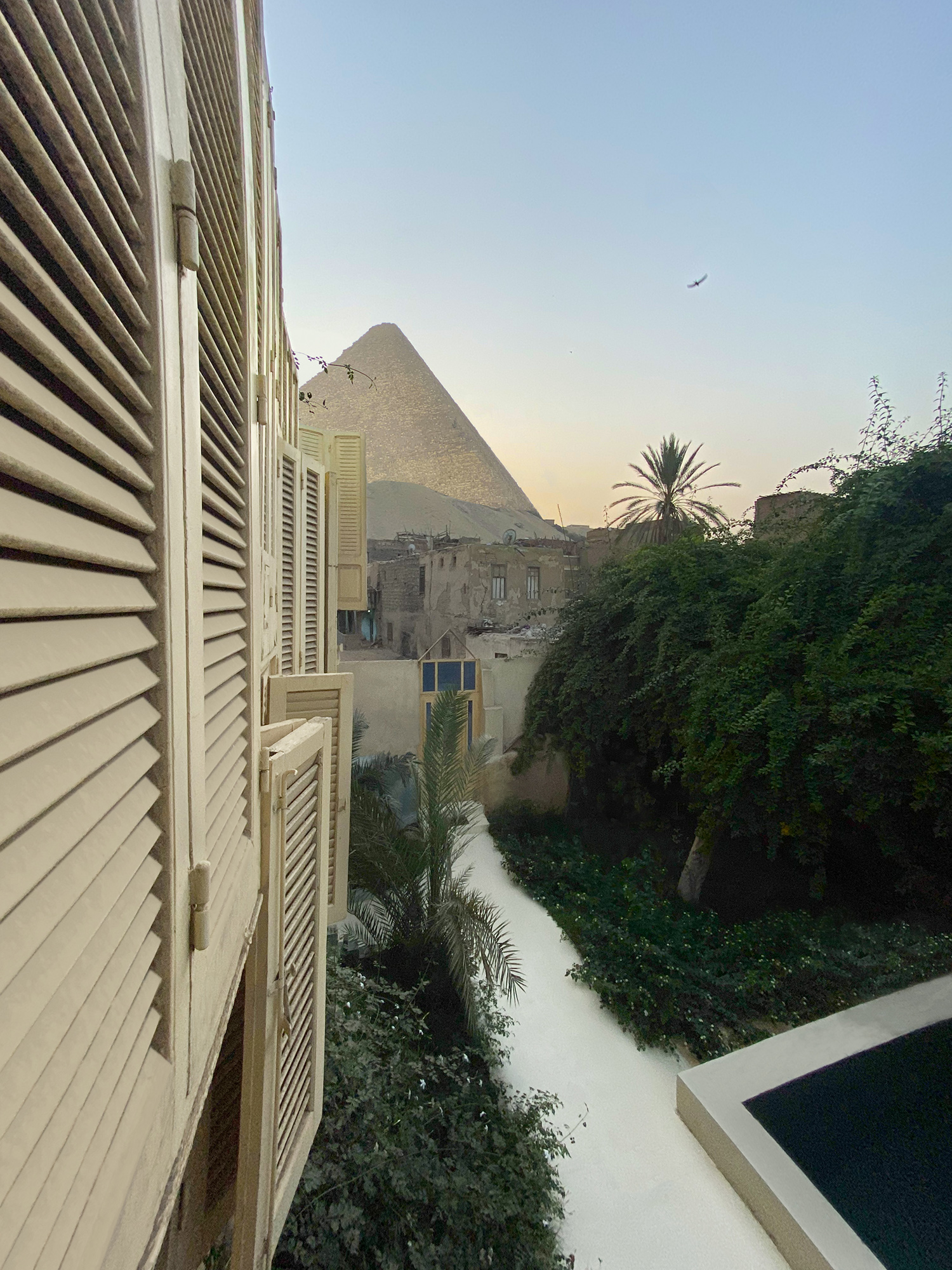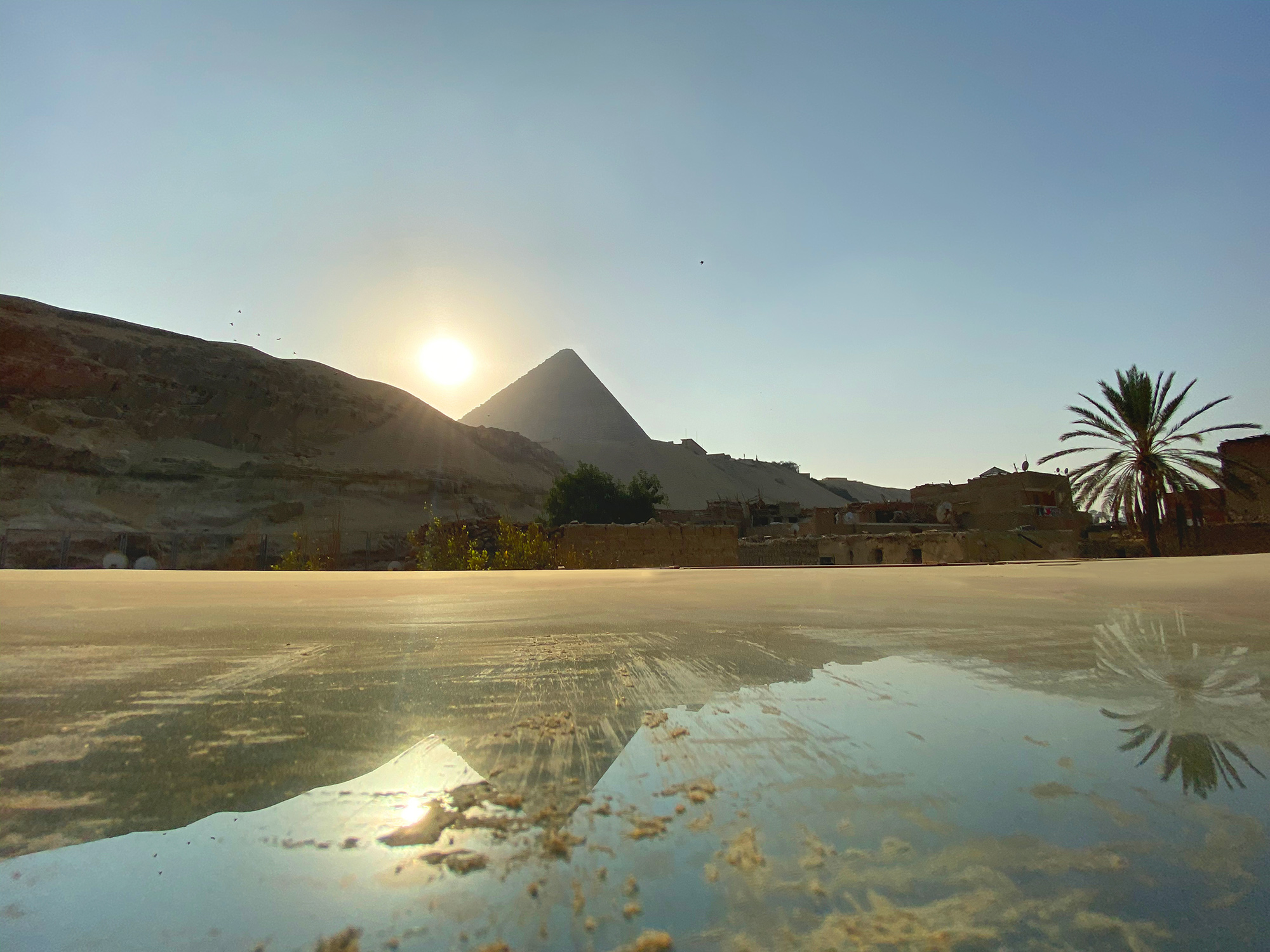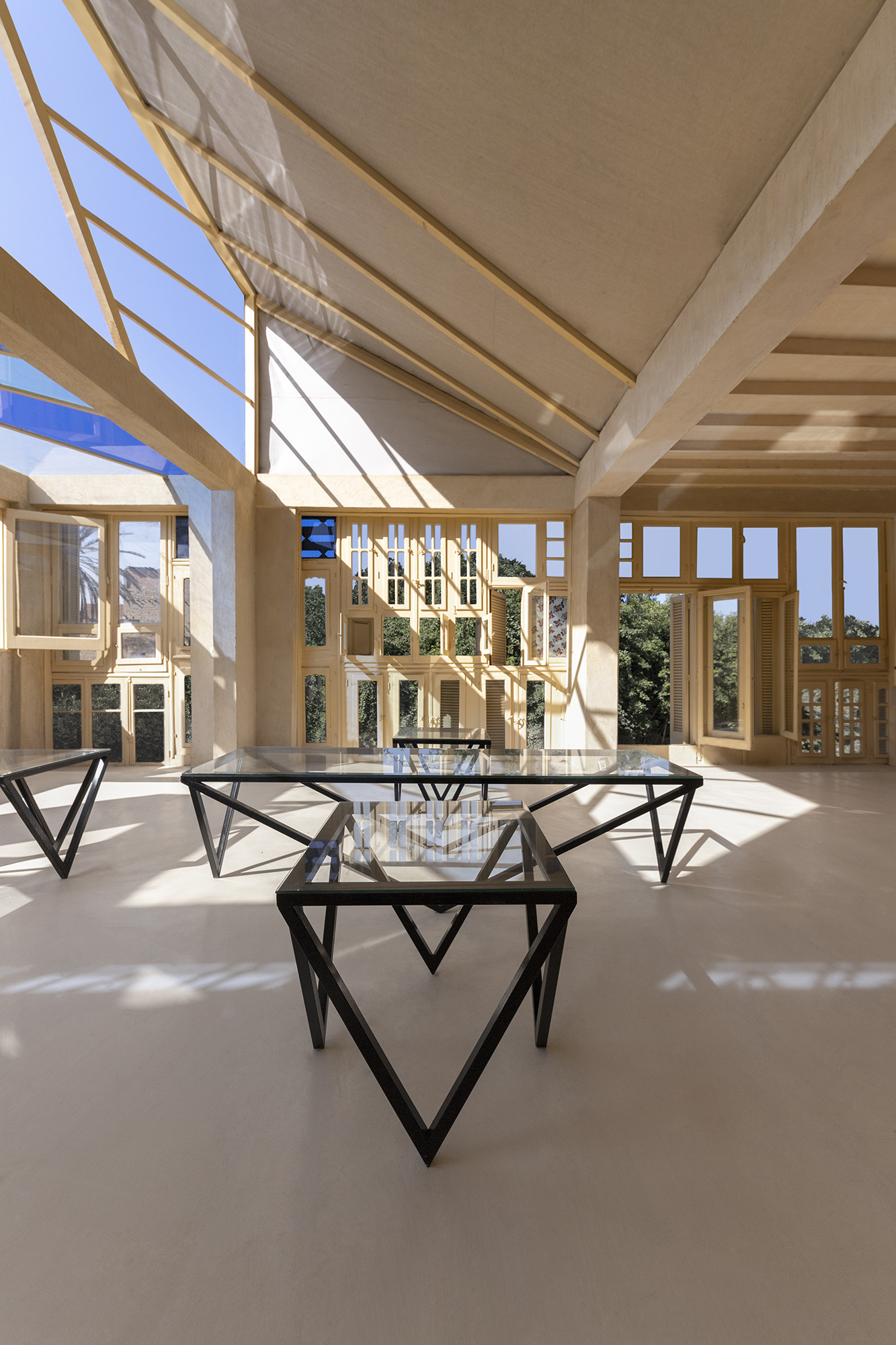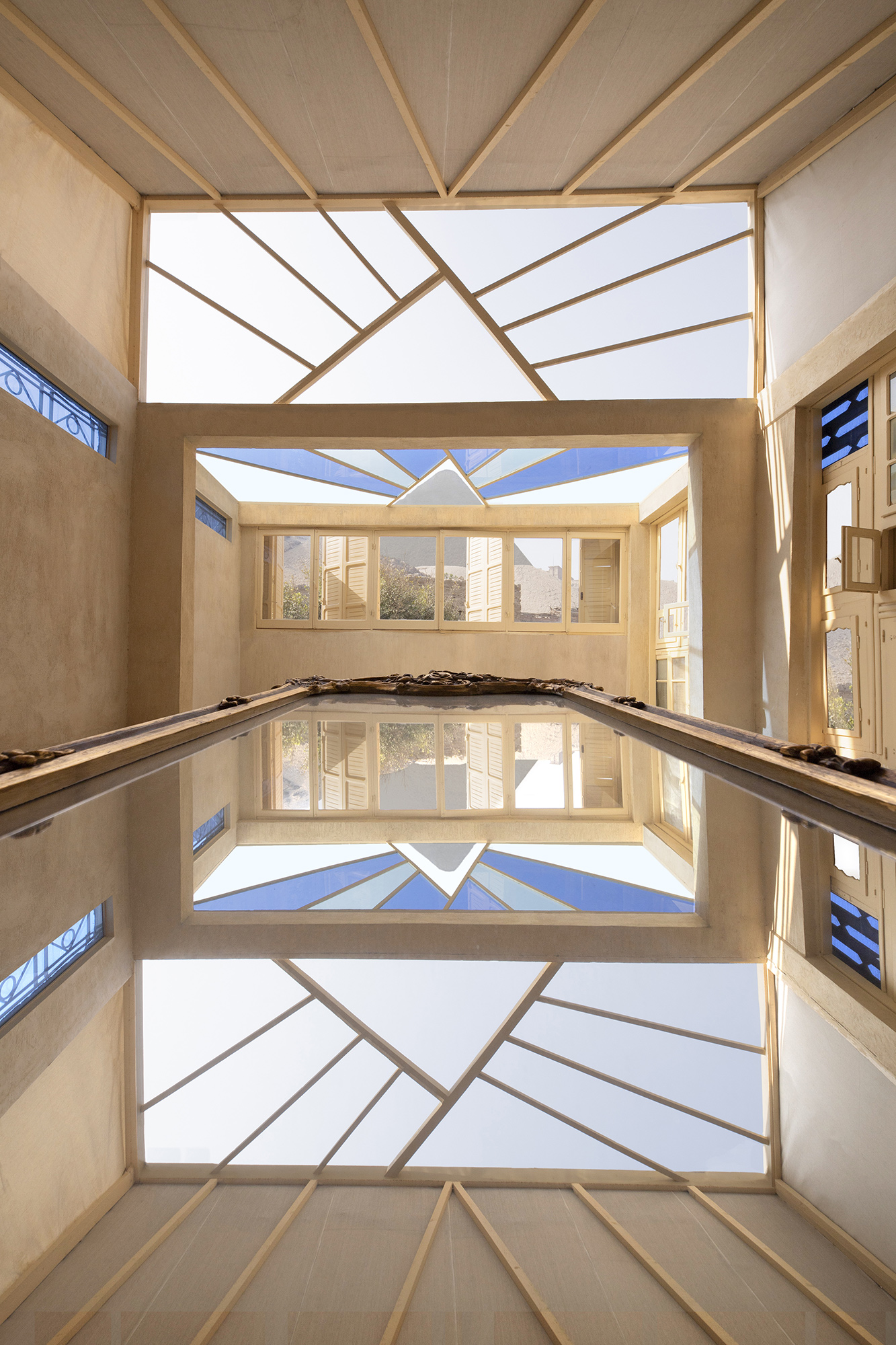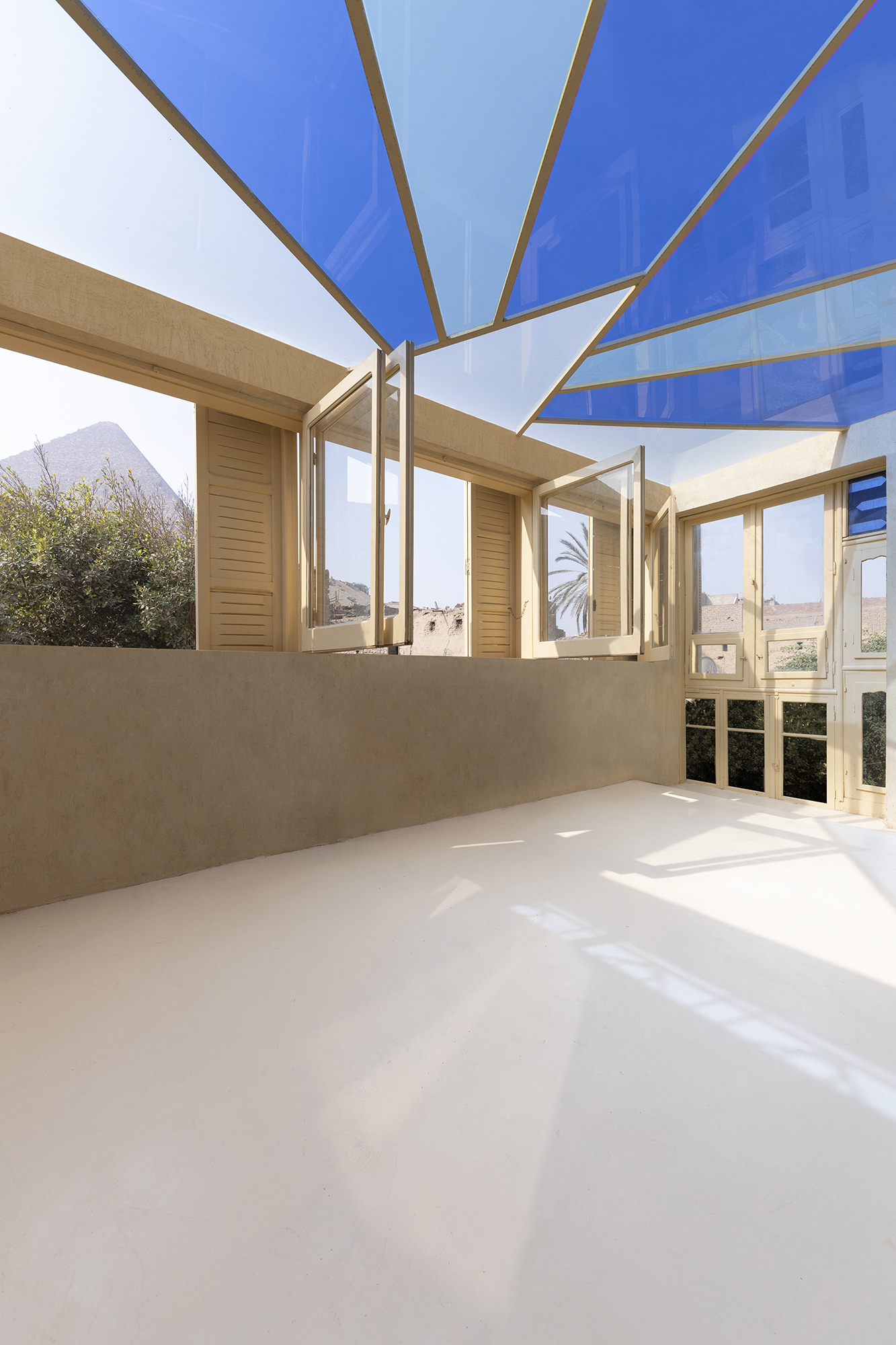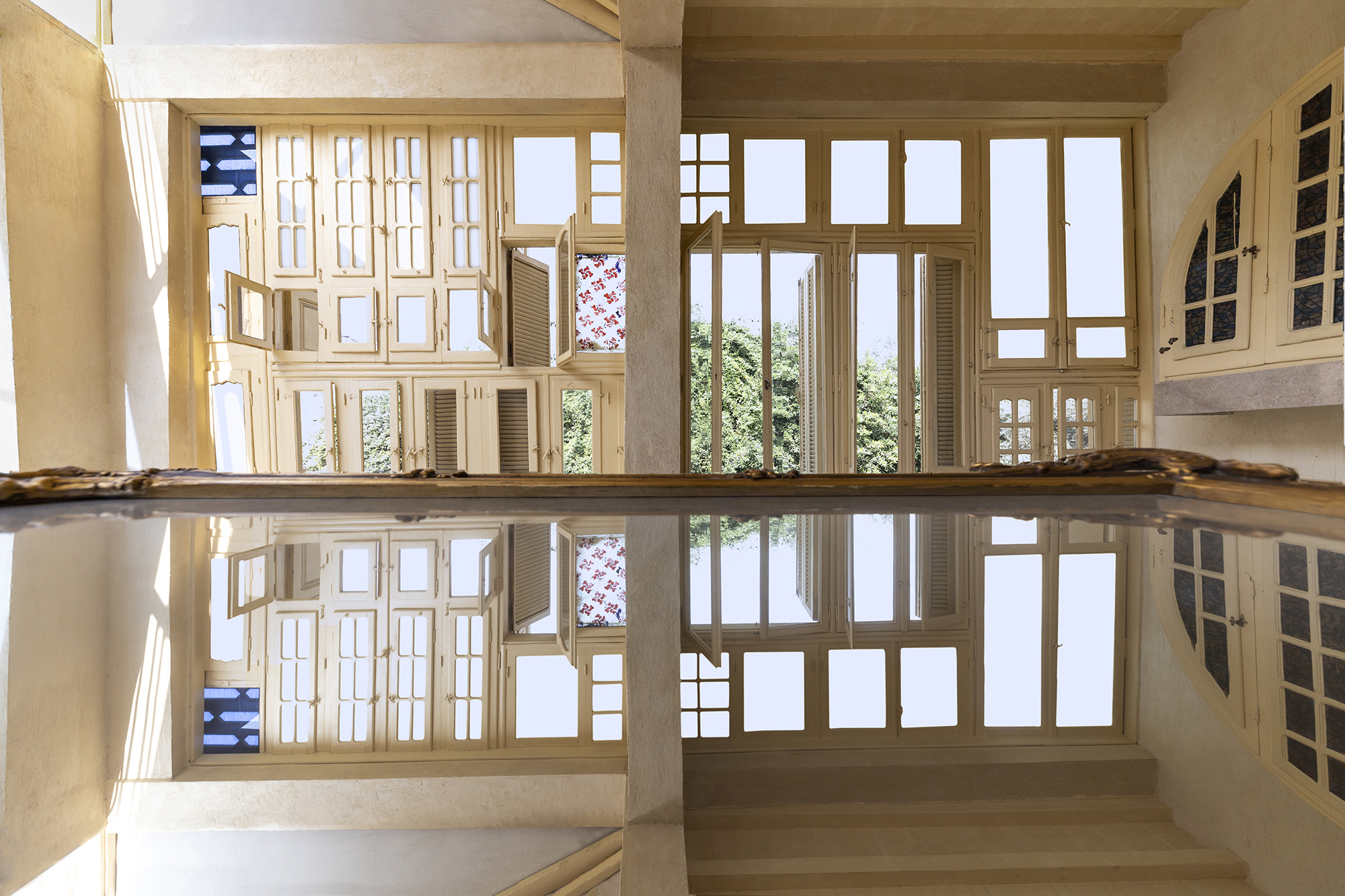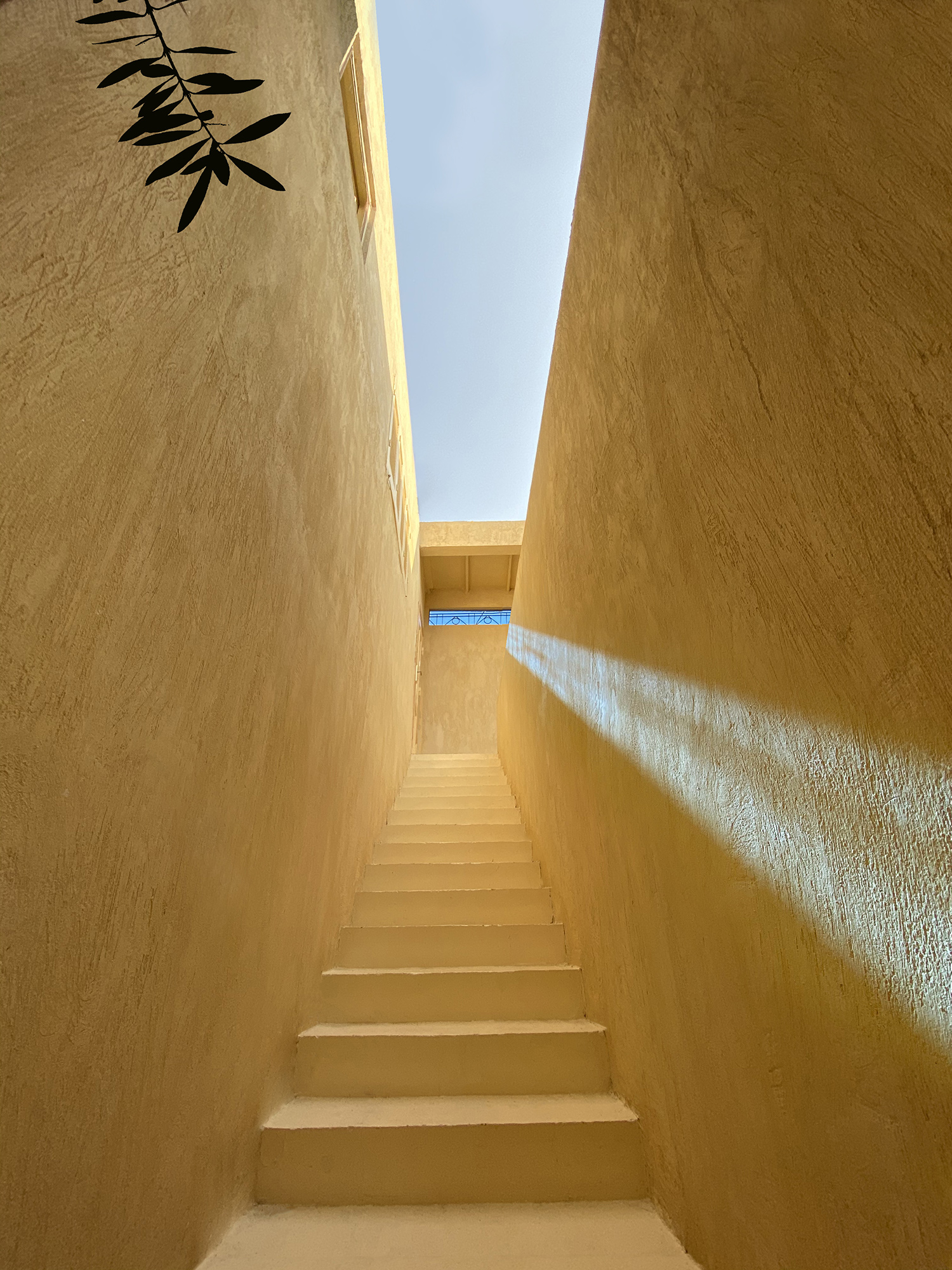CHEOPS OBSERVATORY
Framing the Great Pyramid of Giza
The Cheops Observatory is an artist’s residence, a gateway at the entrance of the desert, an inhabited belvedere a short walking distance to the largest of the pyramids of Giza.
Located on the plateau of the Giza Necropolis, the project is nestled in the village of Nazlet-el-Samaan. This ancient site was founded in the seventh century by desert tribes fascinated by the pyramids; the village is a landmarked site and a journey through time; the most common transport is still by horse or camel. Restoring this village creates a bulwark against the massive tourist influx and real estate speculation so prevalent in these historical districts.
A systemic approach to informal architecture
We worked with a systemic approach on informal architecture, on which an intervention was necessary for safeguarding and preserving the site’s historical importance.
Following centuries-old oral traditions, the residence was built without any plans, using sketches drawn in the desert sand. Local construction techniques, application of ancestral knowledge, and crafts by the villagers were an essential part of the project, underscoring its social and environmental commitment.
Materials were upcycled, diverted, and reused in a short circuit. Facades were made up of an accumulation of raw earth bricks, and recycled traditional windows and shutters came from the circular economy of the village. Part of the crowning consists of a triangular tent handcrafted by an ancestral tribe living in the Giza Desert.
A vertical stratification inscribes this architecture in a temporal process linking the vernacular, the contemporary, and the nomad in one main building. This architecture, with its variable geometry, allows both specific and integral protection, effective against the sun’s rays, as well as optimal cooling air flow on all levels.
An hyper-contextual and sensorial architecture, open to the Great Pyramid
The Observatory was built in an alignment with the Pyramid of Khufu (also known as the Pyramid of Cheops or the Great Pyramid of Giza), the oldest, largest, and the only one of the seven wonders of the ancient world still existing today. The building has an east-west orientation, the optimal position to contemplate the trajectories of the sun and the moon. This exceptional site allows the examination of the relationship of the Pyramid to the North Star and the procession of the equinoxes. These relationships helped to create an architectural and landscape composition with logical continuities and concordances of views while opening impressive vistas toward the Pyramid from the garden, the swimming pool, the Time Room, and even on reflections on the furniture.
The Time Room is a powerful and meditative observation space facing the Great Pyramid of Cheops. A wooden framework with pyramidal truss and radiating lines was designed in a new typology, allowing to double the height of the ceiling. This triangular shape creates a three-dimensional portal that frames the Great Pyramid of Giza. The textile roof folds and unfolds very quickly and, depending on the season, creates an open, covered, or uncovered room.
In addition, a horizontal canopy was installed on the west facade and the sunset creates a second irradiated anamorphosis of the great Pyramid of Khufu which is revealed in the center of the Time Room.
Connected to the elements, this architecture opens out without artifices, bays, glazing, or other dividers to enjoy a dynamic relationship with its environment, generating a hypercontextual space, at once sensory and porous.
The Cheops Observatory is both open and closed, nomadic and sedentary, masculine and feminine construction. Back to the basics of architecture, it creates a dialogue between local vernacular architecture and an architectural ready-made, and an answer to the necessary evolution of informal architecture, one of the fundamental issues of the twenty-first century.
Client: Private
- State: Delivered February 2020
- Type: Observatory, housing, artist residence
- Localisation: Giza Pyramids Plateau, Egypt
